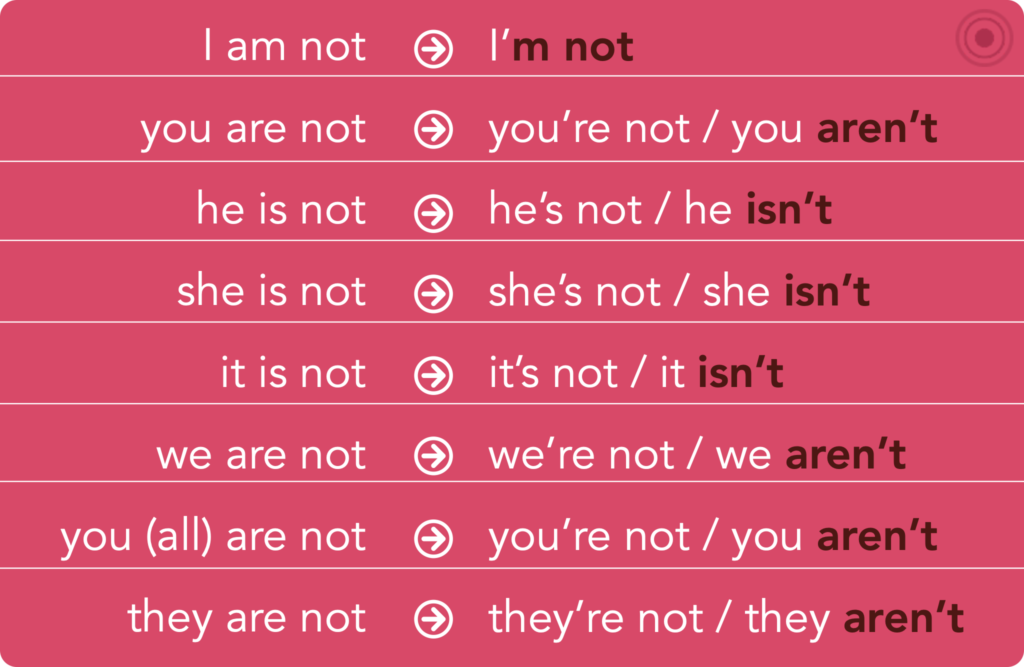LESSON 1 / PRINCIPIANTE

UN VERBO IRREGULAR: “To be”
- Para hacer preguntas con “to be” se pone la forma verbal antes del sujeto:
“She is your sister
(Ella es tu hermana)”
“Is she your sister?
(¿Es ella tu hermana?)
- Para expresar una negación con “to be” se pone la palabra “not” después del verbo, pudiéndose usar también dos contracciones diferentes (menos en la primera persona):
 EJEMPLOS:
EJEMPLOS:
I am a student; I’m in school.
Soy estudiante; estoy en la escuela.
Is he in bed?—Yes, he’s sick.
¿Está él en cama? –Sí, está enfermo.
They are basketball players, but they’re not very tall.
Ellos son jugadores de básquetbol, pero no son
muy altos.
We are in math class, but we aren’t bored.
Estamos en la clase de matemáticas, pero no
estamos aburridos.
Brent, aren’t you tired? It’s midnight!
Brent, ¿no estás cansado? Es la medianoche.


